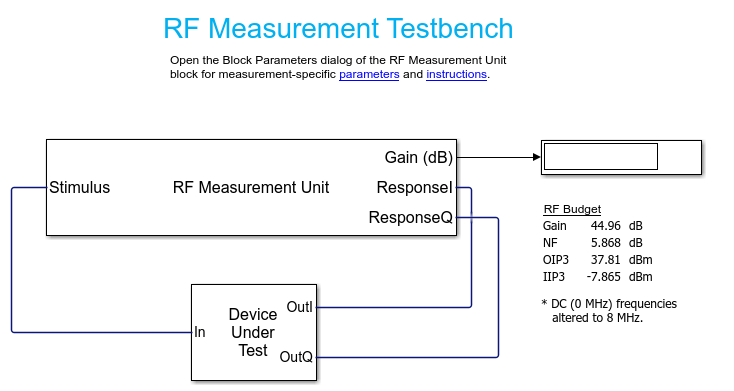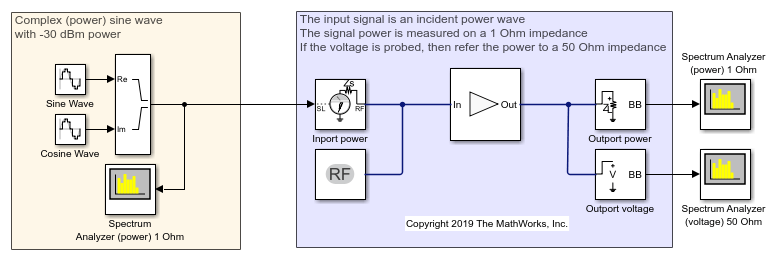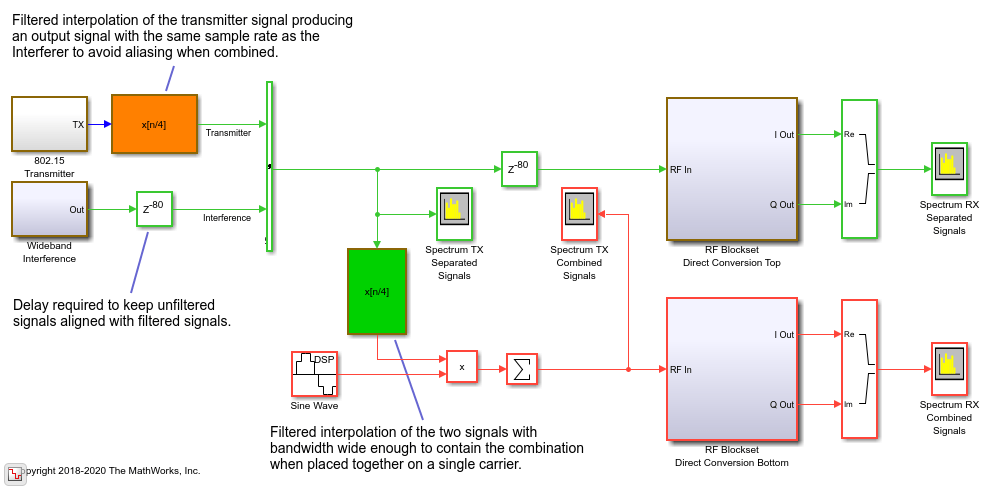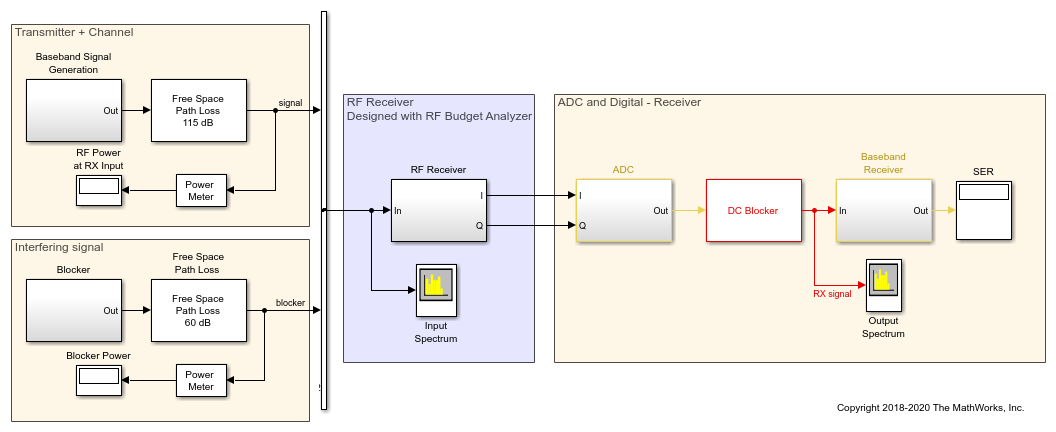Circuit Envelope Fundamentals
The circuit envelope technique speeds up RF system simulation. In Simulink®, simulating high-frequency signals requires a time step proportional to the highest frequency present in the RF system. However, the modulation frequency or envelope of the RF signals can be several orders of magnitude smaller than the highest frequency. The circuit envelope technique takes advantage of this condition to model RF signals accurately while reducing simulation time. For more information on envelope signal representation, see Circuit Envelope Basics.
To learn how to build an RF system using the circuit envelope library, see Getting Started with RF Modeling.
Blocks
Topics
- Circuit Envelope Basics
Introduction, assumptions, advantages, definition, and work flow of Circuit Envelope simulation.
- Circuit Envelope Library
Learn about Circuit Envelope library environment.
- Simulate High Frequency Components
Example showing circuit envelope simulation techniques.
- Model RF Mixer
Expose various workflows for modeling RF systems using an RF mixer example.




